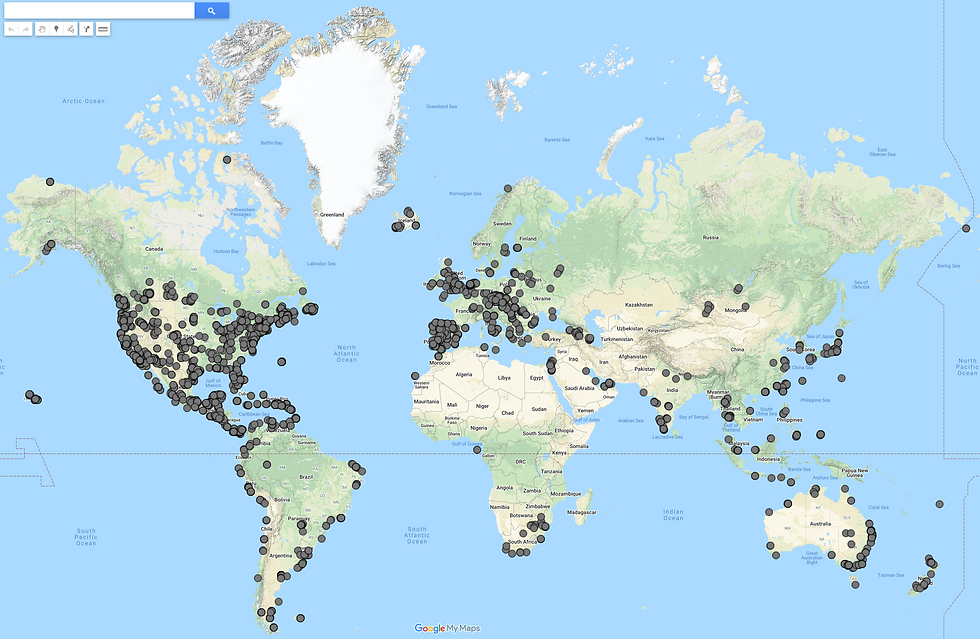
Global
Shorebird
Counts
The Global Shorebird Counts, held every year around World Shorebirds Day (6 September), is one of the key events of World Shorebirds Day. This program demonstrates the importance of fieldwork, supports observers in improving counting skills, contributes to the increase of the number of birdwatchers and scientists monitoring shorebirds worldwide and pledges new citizen scientists to the world’s largest bird database program.
Why to count shorebirds?
Regular counts carried out by thousands of volunteers and professionals worldwide can reveal distribution, population trend or abundance of any species which is fundamental to the assessment of their status and the habitats they live in. Bird monitoring is a key tool to determine whether a population of a bird species is declining or increasing and/or is in need of coordinated conservation efforts or not.

© Alan Davies/birdwatchingtrips.co.uk

© Jean Hall
Careful and professional analysis of bird count data has proven to be essential for setting priorities for the conservation of many shorebird species
The Global Shorebird Counts contributes to these efforts and aims to engage with local patch birders and to transform amateur birdwatchers into citizen scientists on a local level. Our program supports eBird with thousands of submitted data. Cornell Lab of Ornithology has spent many years in developing eBird what now offers an advanced platform for data recording in the field. As a result, over 100 million bird records have been submitted to eBird, making it a powerful source for bird and habitat conservation.
Counting dates
A week, around World Shorebirds Day (6 September) is dedicated for a worldwide shorebird counting. The counting dates might be great for the birdwatchers in the southern part of the Northern Hemisphere but might be too early for counting migrants in the Southern Hemisphere. It’s impossible to set a date suitable for everyone. However, this program is not solely focusing on migrant shorebird species!
1–7 September 2024
1–7 September 2025

Where to count shorebirds?
Shorebirds can be found everywhere and occupy all sort of habitats in all continents. We can find local breeding populations of Chestnut-banded Plovers in South Africa while the migrants are still en route from the Arctic breeding grounds. Australia, Africa and South America have many breeding species, cannot be found anywhere in the world, and those have been well underrepresented in our program.
The opportunities to count shorebirds are endless. Members of an Italian bird club made a survey in an alpine habitat and searched for Eurasian Dotterels. Despite the widely accepted name, used primarily in the Americas (in Eurasia and Australia they are called waders) shorebirds do not exclusively inhabit coastal habitats and shores. Many do, but a large number of species is dependant on completely different habitats (semi-deserts, meadows, grasslands, alpine rivers, alpine meadows, rainforests, inland wetlands, mangroves or even urban habitats), far away from any coastal habitats. Your local patch is perfectly fine in most cases.

How can you take part?
Have an eBird account
While I cannot force anyone to use eBird, it is the only way to share counting results of the Global Shorebird Counts. eBird has proved many times its incredible contribution to bird conservation and our efforts have been a tremendous help for the eBird team to better understand bird migration and population changes. More about why you should eBird is here. Simply register if you are new to eBird.
Download the eBird mobile app
The most convenient way to record bird sightings is by using your mobile phone in the field. The eBird mobile app keeps all your records and lets them being shared with World Shorebirds Day on the go. Read more about the app here.
Count shorebirds
Start the Global Shorebird Counts at your favourite local patch(es) where shorebirds normally occur. You know your area well and you know where to find them. Count shorebirds on as many different locations as you possibly can. We need only one set of complete checklist per site and you decide which one to share with us. Explore new habitats and share checklists from there as well.
Share checklists
Checklist sharing is simple but if you need guidance, eBird has the perfect tutorial on how to do it. Please use our eBird username
worldshorebirdsday
(without spaces) to share checklists with us. You can already share checklists in the field from the eBird mobile app. Just add World Shorebirds Day to your contacts.